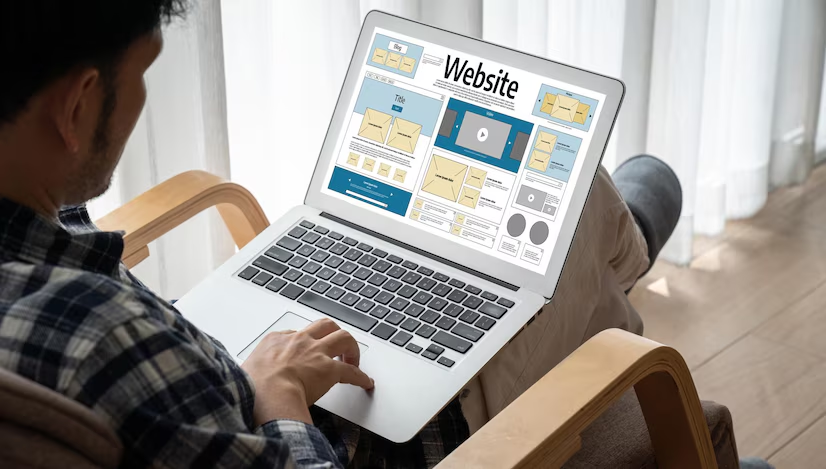Enhancing your website’s page authority (PA) is crucial to gaining visibility, driving traffic, and ranking higher on search engine results pages (SERPs). While it may sound daunting, boosting your PA can be straightforward if you know the right steps. This guide will walk you through a step-by-step process to improve your website’s PA effectively. From understanding the fundamentals of page authority to implementing strategies for sustained growth, this guide will help you master the art of building a strong online presence.
What Is Page Authority and Why Does It Matter?
Page authority (PA) is a ranking metric developed by Moz that predicts how well a specific page will perform on SERPs. The score ranges from 1 to 100, with higher scores indicating a stronger likelihood of ranking well. A high PA often translates to better search visibility, more organic traffic, and higher credibility in the eyes of both users and search engines. Unlike domain authority, which evaluates the overall strength of your domain, PA focuses on individual pages, giving you a clear insight into which specific pages need improvement.
While PA isn’t an official metric used by Google, it correlates with ranking factors like link quality, local SEO, and content relevance. Therefore, optimizing your PA can significantly boost your website’s overall performance.
Step 1: Focus on High-Quality Content
Content is king, and for good reason. High-quality, relevant content not only helps to engage your audience but also signals to search engines that your page is a valuable resource. A well-written, informative, and updated piece of content will naturally attract backlinks, increase dwell time, and improve your PA.
To create high-quality content, follow these best practices:
- Address User Intent: Ensure your content solves a problem or answers a question that users are searching for.
- Optimize for Keywords: Use relevant keywords naturally within the content without overstuffing. Use keywords in headings, subheadings, and throughout the body.
- Add Visuals: Use images, infographics, and videos to enhance the user experience and make your content more shareable.
- Update Regularly: Refresh your content periodically to maintain relevance and improve your chances of ranking higher.
Remember, the more value your content provides, the more likely you will gain quality backlinks and increase your PA.
Step 2: Build High-Quality Backlinks
Backlinks from authoritative websites play a significant role in boosting your page authority. The more high-quality backlinks you have, the more credibility your page gains. However, not all backlinks are equal; spammy or low-quality links can negatively affect your PA.
How to Build Quality Backlinks:
- Guest Posting: Contribute guest posts to reputable websites within your niche to gain backlinks to your page.
- Broken Link Building: Find broken links on other websites and offer your content as a replacement.
- Resource Page Outreach: Contact websites that have resource pages related to your topic and request a link to your content.
- Skyscraper Technique: Identify popular content in your industry, create a better version, and reach out to websites linking to the original piece.
Quality is key when it comes to backlinks. Focus on earning links from high-authority websites within your niche to see significant improvements in your PA.
Step 3: Optimize On-Page SEO
On-page SEO is essential for improving your page authority. By optimizing elements like titles, meta descriptions, headers, and URLs, you make your content easier for search engines to understand and rank. Here are some on-page SEO strategies:
- Title Tags: Use concise and keyword-rich titles that accurately describe the page content.
- Meta Descriptions: Write compelling meta descriptions that include your target keywords and entice users to click.
- URL Structure: Use short, descriptive URLs with keywords relevant to the content.
- Header Tags (H1, H2, H3): Structure your content with header tags to enhance readability and improve keyword optimization.
- Internal Linking: Link to other relevant pages on your website to spread link equity and boost page authority.
By enhancing on-page SEO elements, you improve your chances of ranking higher on search engines and driving more traffic to your page.
Step 4: Improve User Experience (UX)
User experience (UX) plays a crucial role in determining how users interact with your page and how search engines perceive its value. Factors like page load speed, mobile responsiveness, and site navigation are essential in improving UX.
Steps to Enhance UX:
- Speed Up Your Website: A slow-loading page can lead to a high bounce rate. Use tools like Google PageSpeed Insights to identify issues and improve page load times.
- Mobile Optimization: Ensure your website is mobile-friendly and offers a seamless experience across all devices.
- Improve Navigation: Make sure your website is easy to navigate, with clear menus and categories.
- Use Engaging CTAs: Use clear and actionable calls-to-action (CTAs) to guide users through your site.
A great UX enhances user engagement and sends positive signals to search engines, contributing to higher page authority.
Step 5: Strengthen Internal Linking Structure
Internal linking is an often-overlooked yet powerful way to improve page authority. By linking related pages within your website, you spread link equity and help users discover more content.
How to Implement Effective Internal Linking:
- Link Relevant Content: Use internal links to connect related content and guide users to more in-depth information.
- Use Anchor Text Wisely: Make sure the anchor text is relevant to the linked page and includes keywords naturally.
- Balance Link Distribution: Don’t overdo internal linking. Ensure links are placed in a natural and useful way to the user.
Internal links improve your page authority and enhance your website’s overall structure and user experience.
Step 7: Monitor and Analyze Your Progress
Boosting your page authority is an ongoing process, and regular monitoring is crucial for tracking your progress and making necessary adjustments. Use analytics tools like Google Analytics and Moz’s page authority checker tool to assess your PA score, backlinks, keyword rankings, and traffic data.
By analyzing your data, you can identify what strategies are working and where improvements are needed. Set regular intervals to review your progress, tweak your approach as required, and keep working toward a higher PA score.
Conclusion
Improving your website’s page authority is key to driving organic traffic, boosting visibility, and establishing credibility in your niche. By using a page authority checker tool, focusing on high-quality content, building quality backlinks, optimizing on-page SEO, enhancing user experience, strengthening internal links, and regularly monitoring your progress, you can effectively increase your PA score. Remember, the journey to higher page authority takes time, but you can achieve lasting success with consistent effort and the right strategies.




